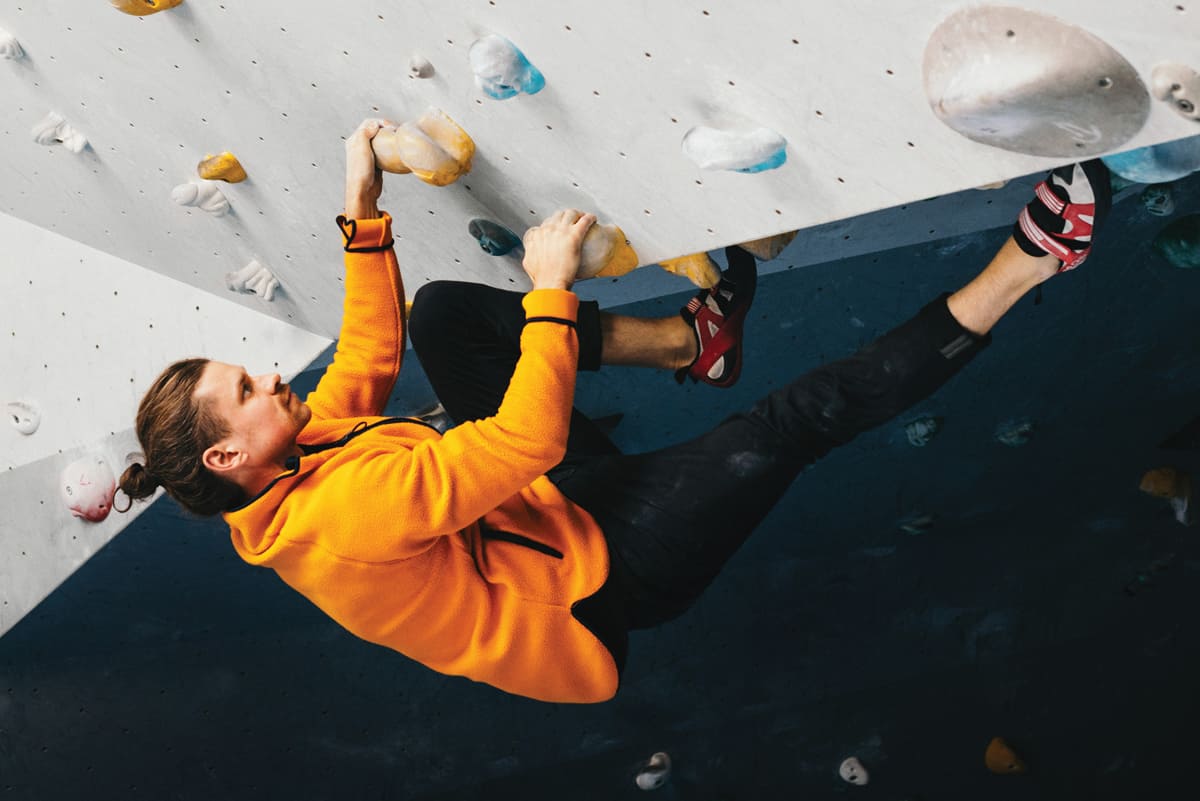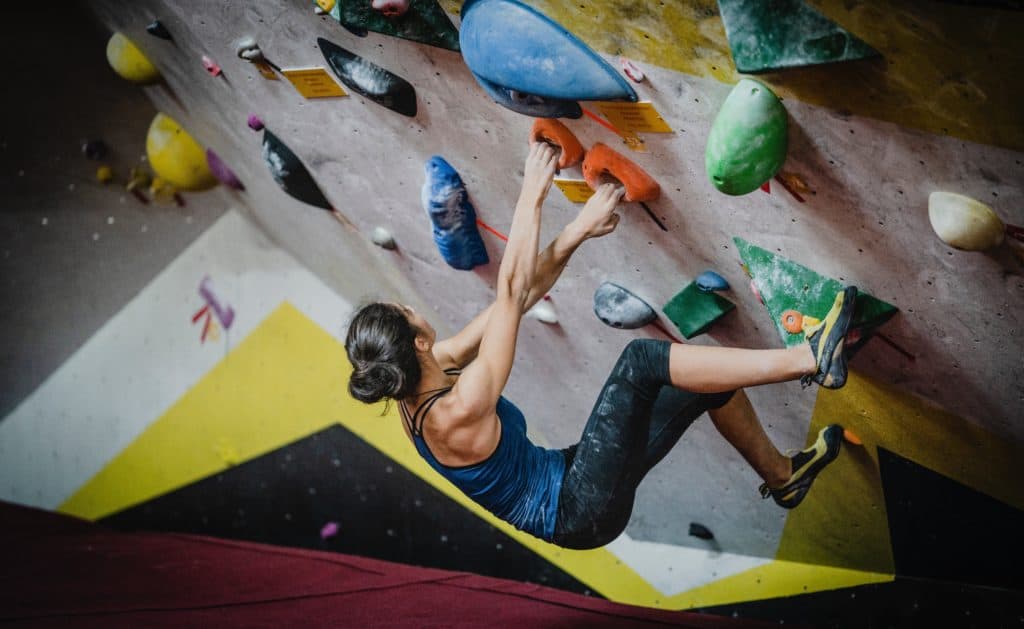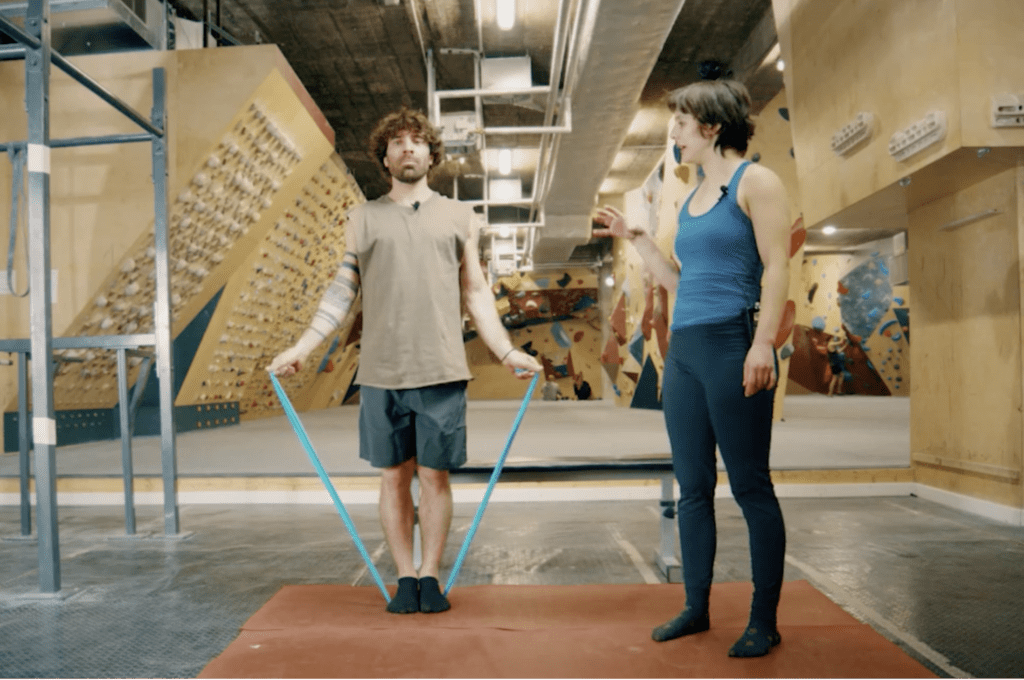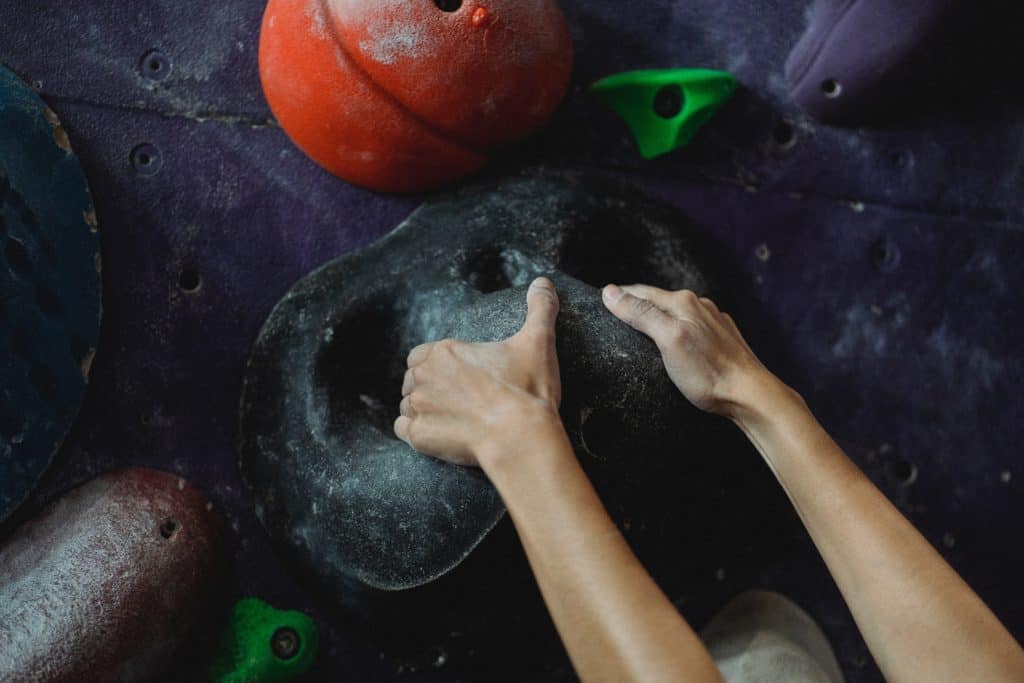
What muscle groups does bouldering train?
Bouldering is much more than just a trend sport, and is thrilling more and more people. No wonder, as free climbing across the wall is a lot of fun: you can exchange ideas, give each other tips, and improve your technique and routes. Not to mention that bouldering is the perfect full-body workout, which will allow you to build muscle and gain strength. If you’re not at the bouldering center, why not try our new on‑demand bouldering videos? Annika and Patrick from Basement Boulderstudio will give you helpful tips to improve your bouldering: anything from the basics to proper stretching and core strength training.

Which muscle groups are used when bouldering?
Anyone who dares to get on the wall will quickly realize that climbing utilizes all of your muscles. In addition to good technique and the correct grip, you also need plenty of strength to keep your body on the climbing wall. Bouldering trains these muscles in particular:
- Biceps
- Forearm muscles
- Teres major
- Back muscles
- Latissmus dorsi (back muscles)
- Rotator cuff
- Hand muscles
- Abdominal muscles
- Leg muscles
- Calf muscles
- Chest muscles
As you can see, bouldering allows you to train a wide variety of muscles – this makes bouldering and climbing the perfect full-body workout, which will let you build a lot of strength using just your own bodyweight.
Bouldering – what is it, exactly?
In case you are wondering what bouldering actually is: unlike rope climbing, bouldering does not require a rope or a safety partner, as you are climbing low enough that you can safely jump off the wall – usually, the walls are between three and four meters high. You can find routes with different levels of difficulty on the wall of a bouldering hall, so that after mastering a route, you can venture to the next level. For bouldering, you will need some (fairly) tight bouldering shoes, plus some climbing chalk to improve your grip. Shoes and chalk can be borrowed at a cost at most bouldering centers. Bouldering is also a great sport for beginners: you don’t need much prior knowledge, and you can easily have a go by yourself.
What training is best for bouldering?
Bouldering itself is, of course, good training for the muscles, as you work with your own bodyweight. But aside from the bouldering routes, there are also a lot of strength exercises that you can do for the muscles it requires. You will find a kind of “all-round workout”, i.e. exercises for various muscles, to be the best for this training. For beginners, however, hangboard training is not recommended, as the risk of injury is too great. Your hands take a long time to get used to the heavy strain, but they will get there over the years thanks to bouldering alone. Anyone who wants to train at home can do so with their own body weight – in our on-demand series, you will find helpful exercises for various important aspects of bouldering. This includes stretching or antagonist training, both of which are often neglected by boulderers, but are also important for your training. In our videos, you will discover what exercises will help you improve your strength or mobility, and what basic elements of bouldering you should know.

What sports can support your bouldering?
To enjoy even greater success in bouldering, you will need practice and good technique. Especially in a group of like-minded people, it is a lot of fun to analyze routes, give each other tips and exchange ideas. It also helps to master as many sequences of movements as possible. Above a certain level, however, targeted strength exercises such as finger strength training will be essential. In addition, climbing is not quite enough cardio training, so sports like swimming or running might be a good addition. Yoga is also a good call, as it allows you to have a good stretch and target your antagonistic muscles.
How can you improve your bouldering skills?
Whether you’re just starting out or have been bouldering for a long time, bouldering is all about celebrating successes and improving your skills. But how do you actually go about improving your bouldering skills? Are there any tips that will help you to reach new heights, in the full sense of the word? Patrick, a bouldering expert from Basement Boulderstudio, advises that “no one will ever perfect their bouldering skills. Everyone has their own weaknesses that they can work on. As an advanced boulderer, for example, it is well worth climbing augmented boulders that may not be in your preferred style. This means, if I really like flats, then now and again, I should also try a steep overhang route, or vice versa. If I’m good at holding small hand-holds, I should still also try some routes with larger grips (slopers). It sometimes takes a lot to step out of your comfort zone, but it is definitely always worth it.”

Getting to know your weaknesses is the first step on the way to actively working on improving them. It might be easier to try new things and get out of your comfort zone if you go along with other boulderers. In a team, you can encourage each other and give each other training tips.
What should you focus on as a beginner?
Besides the basics such as the right warm-up, equipment and the correct way of falling, you should also know the technical basics. A tip from Annika from Basement Boulderstudio Berlin: “beginners should not climb with bent arms, but rather with straight arms, and put your tip-toes on the foot-holds. That will save a huge amount of strength.” Apart from that, you do not need to do any particular additional strength or muscle-building exercises: that is only relevant and useful above a certain level. If you have already started bouldering, your first priority should be to develop a proper technique, learn as many movement sequences as possible, and above all, have fun.
Where can I go bouldering?
With your Urban Sports Club membership, you can check in at many bouldering centers and try as many new routes as you like. In Berlin, for example, you can choose from bouldering centers including Der Kegel, Bouldergarten or Basement Boulderstudio – some centers also have an outdoor area. Or you can scale the walls in der einstein Boulderhalle in Munich. There is also an einstein Boulderhalle in Düsseldorf, which has just opened its doors for you. For your complementary training between your visits to the bouldering center, we recommend our new on-demand video series “Besser bouldern” (“Better bouldering”) – this will allow beginners and advanced boulderers alike to expand and improve their bouldering skills. The videos are in German, but you can do the exercises even if you don’t understand German.



Comments